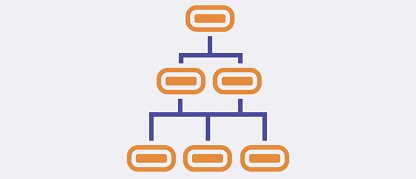Taxonomies, thanks to content management systems such as WordPress, have a multifunctional role in a website because they can be part (or all) of its navigation structure. In addition to their impact on content SEO, they provide valuable elements for the information architecture, the search experience, and the usability of the site. Continue reading Create The Taxonomy Of Your Website And Improve Your SEO, we will tell you about this and also about IAB Tech Lab’s Content Taxonomy, a tool that will make the task extremely simple.
Taxonomies
What is a taxonomy? In the context of the WordPress Codex, which is the one that corresponds to us to consider here, taxonomy is understood as the set of words, called terms, that allows organizing the information of a website, keeping the contents of the same theme together. Specifically, WordPress defines a taxonomy, extremely concisely, as “a way of keeping things together”.
This is done by assigning each site content (Entries) one or more terms from the taxonomy. Furthermore, the concept of taxonomy, when applied to the organization of knowledge, may also imply the existence of a hierarchical structure (classes and subclasses).
A WordPress taxonomy is composed either only of terms (in the case of Tags), or by terms and child terms (in the case of Classifications). Therefore, we can say that in WP there are hierarchical taxonomies (or strictly speaking), and flat taxonomies (without hierarchy).
In a standard WordPress installation, we actually find four taxonomies. First of all, the Categories and Labels, which are the ones we will deal with here because of their relationship with navigation and organization of information.
Some extra info…
In addition, there are two others (which we will not deal with because they deviate from the subject). Namely the Link Categories, which in theory are used to organize lists of links (as the Codex points out, but which we have not been able to find a practical use for and whare ich, in fact, not often used on today’s sites) and Posts Formats, which allow content to be published using different types of post formats, such as Posts, Mini-Posts, Quotes, and others. Of all these formats, Posts and Pages are the most typical.
The taxonomy of your website will dictate the type of content you create and the organization of your site. If you want to improve your SEO, then it is crucial to have a well-organized website; have a good taxonomy that will provide the best user experience for your visitors.
Create The Taxonomy Of Your Website And Improve Your SEO
There are many different ways in which you can organize your website’s content and create its taxonomy. The most popular ones are:
– A flat structure (one level deep) where all pages are on the same level
– A nested structure (multiple levels deep) where pages can be sorted into categories
Text Classification IAB Taxonomy
The Content Taxonomy has evolved over time to provide publishers with a consistent and easy way to organize their website content. For example, to differentiate “sports” vs. “news” vs. “wellness” material. IAB Tech Lab’s Content Taxonomy specification provides additional utility for minimizing the risk that content categorization signals could generate sensitive data points about some things. Some examples are race, politics, religion, or other personal characteristics that could result in discrimination.

What are the most common uses cases of this API? This API is beneficial for businesses that have a big volume of data that has to be sorted by category. As a result, you will be able to collect text by categorizing it. Furthermore, it is great for marketing organizations who wish to extract and categorize data online. Also useful for categorizing phrases or slogans, IAB standards provide precise classification.


